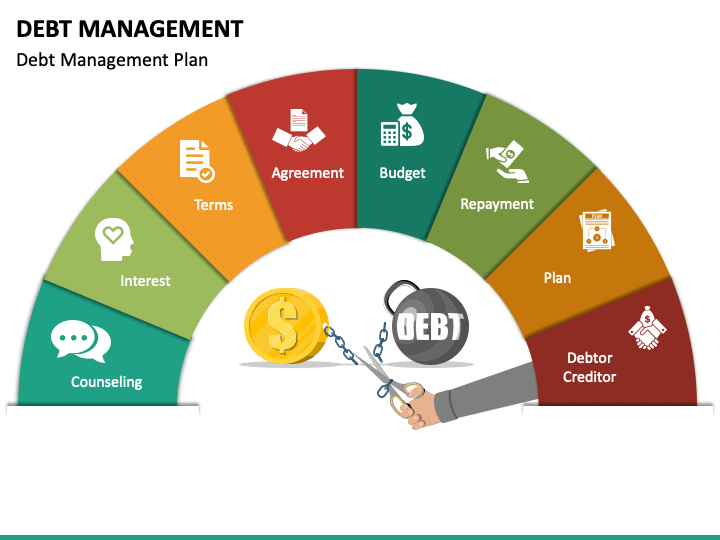Real-Life Success Stories of Financial Obligation Debt Consolidation: More Discussion Posted Here
Wiki Article
Every Little Thing You Need to Know Regarding Developing a Personalized Debt Management Plan
In the world of personal financing, devising a tailored debt management plan is usually the keystone of achieving economic security and satisfaction. By diligently examining your present monetary responsibilities, setting possible financial purposes, and crafting a practical budget, you lead the way for reliable debt repayment strategies. However, the journey to financial liberty is not only regarding preliminary preparation; it likewise calls for ongoing surveillance and modifications to ensure continued progression. As you browse the intricacies of producing a personalized financial debt administration strategy, recognizing the ins and outs of each action is vital to your financial success.Analyzing Your Current Financial Obligation Situation
One should first conduct a complete evaluation of their present financial debt obligations prior to creating an efficient debt administration plan. Evaluating your existing debt situation is an essential primary step in getting control of your finances. Begin by collecting all needed financial papers, such as bank card statements, financing arrangements, and any kind of outstanding expenses. Produce a breakdown of each financial debt, consisting of the overall amount owed, rate of interest, minimum month-to-month payments, and due days. This extensive review will offer a clear image of your monetary standing and assistance focus on which debts to address first.After assembling this info, determine your total debt-to-income ratio by dividing your month-to-month financial obligation settlements by your monthly earnings. Understanding these aspects of your financial circumstance will assist you in establishing a customized financial debt administration strategy tailored to your particular demands and objectives.
Setting Financial Goals and Targets

When establishing financial goals, it is necessary to be particular, measurable, possible, pertinent, and time-bound (SMART) For instance, you may set a goal to repay a particular amount of financial obligation within a certain timespan, such as decreasing your charge card equilibrium by $5,000 in the next 12 months - More Discussion Posted Here. By setting clear targets like this, you can track your development and stay inspired to achieve your financial obligation monitoring purposes
Furthermore, take into consideration prioritizing your debts based on factors such as rate of interest, impressive balances, and payment terms. By concentrating on high-interest financial debts initially, you can save money in the future and accelerate your journey towards monetary flexibility. Remember, everyone's financial circumstance is one-of-a-kind, so customize your targets and objectives to fit your specific needs and situations.
Producing a Realistic Budget Plan
Crafting a well-defined budget plan is a basic step in effective financial obligation monitoring and economic preparation. A reasonable budget plan offers as a roadmap for your monetary wellness, assisting you track your revenue, expenses, and financial obligation payments. To develop a functional spending plan, begin by listing all your resources of earnings.When setting spending plan restrictions, be honest with yourself about your investing habits and financial obligations. Allocate a part of your income towards settling debt while ensuring you have some funds for emergencies and savings. Regularly evaluation and adjust your budget plan as required to stay on track with your financial objectives and financial debt payment plan. By adhering to a reasonable budget plan, you can successfully handle your debt and job towards a more safe and secure financial future.
Checking Out Financial Debt Settlement Methods
After establishing a practical budget, the next essential step in reliable financial obligation management is to explore different debt payment methods. One usual approach is the snowball method, where you concentrate on paying off the smallest financial debts first while making minimum repayments on larger debts. This technique can help build momentum as you see smaller sized my latest blog post financial obligations being cleared, giving motivation to tackle larger ones.One more method is the avalanche technique, which includes prioritizing debts with the highest rates of interest. By targeting high-interest financial debts initially, you can lower the total quantity you pay in passion with time. This approach may be more economical over time, although it could take longer to see specific financial debts fully paid off.
Financial debt loan consolidation is one more alternative where you integrate multiple financial debts into a solitary finance with a lower rates of interest. This can streamline your settlement procedure and possibly minimize the complete interest paid. However, it's necessary to carefully think about the charges and terms connected with loan consolidation to ensure it's the appropriate selection for your monetary circumstance.
Surveillance and Readjusting Your Strategy

Adjusting your strategy may entail reallocating funds to take on high-interest financial debts first, discussing with financial institutions for reduced rate of interest prices or much better repayment terms, or discovering additional revenue resources to accelerate debt payment. As your monetary circumstance develops, your debt administration plan ought to adjust as necessary to stay efficient. By remaining proactive and versatile in surveillance and readjusting your strategy, you can optimize your initiatives towards settling your financial obligations successfully and achieving your financial goals.
Conclusion
Finally, creating a customized debt management strategy entails examining present financial obligation, setting economic objectives, developing a reasonable budget, discovering payment techniques, and monitoring and readjusting the strategy as needed. By adhering to these actions, individuals can take control of their financial circumstance and work in the direction of ending up being debt-free. It is essential to remain regimented and committed to the strategy in order to accomplish lasting economic stability.
One must initially conduct an extensive assessment of their current financial obligation obligations prior to developing an efficient debt monitoring plan.After developing a reasonable spending plan, the next crucial action in efficient debt monitoring is to explore various debt you could try here payment strategies - More Discussion Posted Here.To properly manage your financial debt, continuous monitoring and adjustment of your financial obligation management strategy are necessary elements for long-lasting monetary security.Changing your plan may include reallocating funds to tackle high-interest financial debts initially, working out with financial institutions for reduced interest rates or much better settlement terms, or discovering additional earnings resources to accelerate financial debt payment.In final thought, developing a tailored financial obligation administration plan involves analyzing present debt, establishing economic goals, developing a practical budget plan, exploring repayment methods, and tracking and adjusting the strategy as required
Report this wiki page